Do you truly accept yourself as you are right now, or are you always just a few pounds, promotions, or changes away from becoming an “acceptable” version of yourself? Real self-acceptance is never conditioned upon making changes to who or how you are now.
In fact, self-acceptance has nothing to do with what you look like, what you do, or how well you do it. It doesn’t hinge on other people’s opinions of you, your opinions about yourself, or even on your self-esteem. Self-acceptance is the ability to accept yourself fully and completely, without any changes, exceptions, or conditions.[1][2][3]
This article will break down the mysteries of self-acceptance by teaching you what self-acceptance is (and isn’t), what it looks like, and how to practice it.
Sections
- What is self-acceptance?
- What is radical self-acceptance?
- Do you need to work on self-acceptance?
- Why is self-acceptance so difficult?
- Why is self-acceptance important?
- 15 steps towards self-acceptance
- Self-acceptance quotes
What is self-acceptance?
Self-Acceptance: Unconditional acceptance of yourself, including your positive and negative qualities, traits, and tendencies.[1][2][4][5]
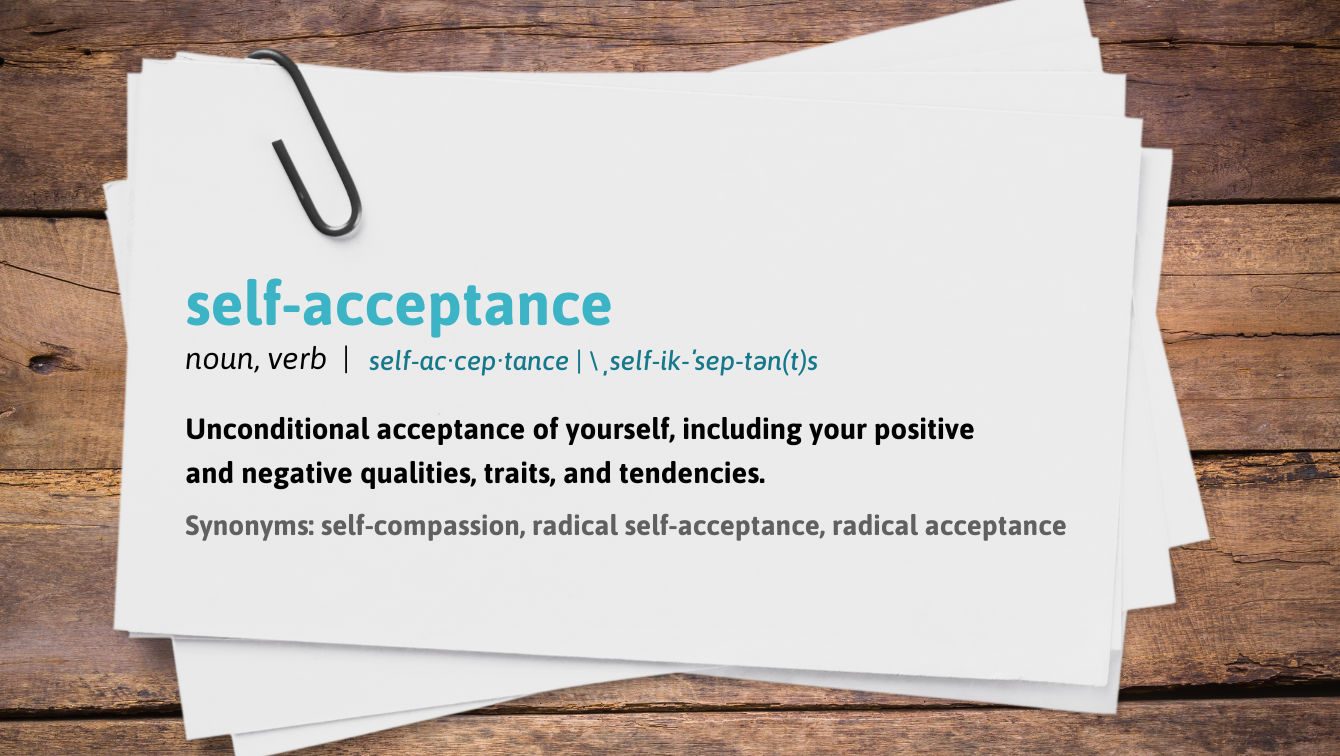
Self-acceptance is both a mindset as well as something you demonstrate through your actions. For example, the acceptance mindset involves being able to accept yourself as you are now, without feeling like you have to change anything about yourself first.[1][3] As a practice, self-acceptance is demonstrated through unconditional positive regard, meaning you show yourself kindness, compassion, and respect at all times.
No one is perfect, and self-acceptance is the ability to accept your imperfections. This doesn’t mean that you can’t have self-improvement goals. It just means that your acceptance of yourself isn’t conditioned upon reaching these goals or making certain changes or improvements to yourself.[1][2][3] Essentially, self-acceptance is tolerating your imperfections and making peace with the fact that you’re a work in progress.
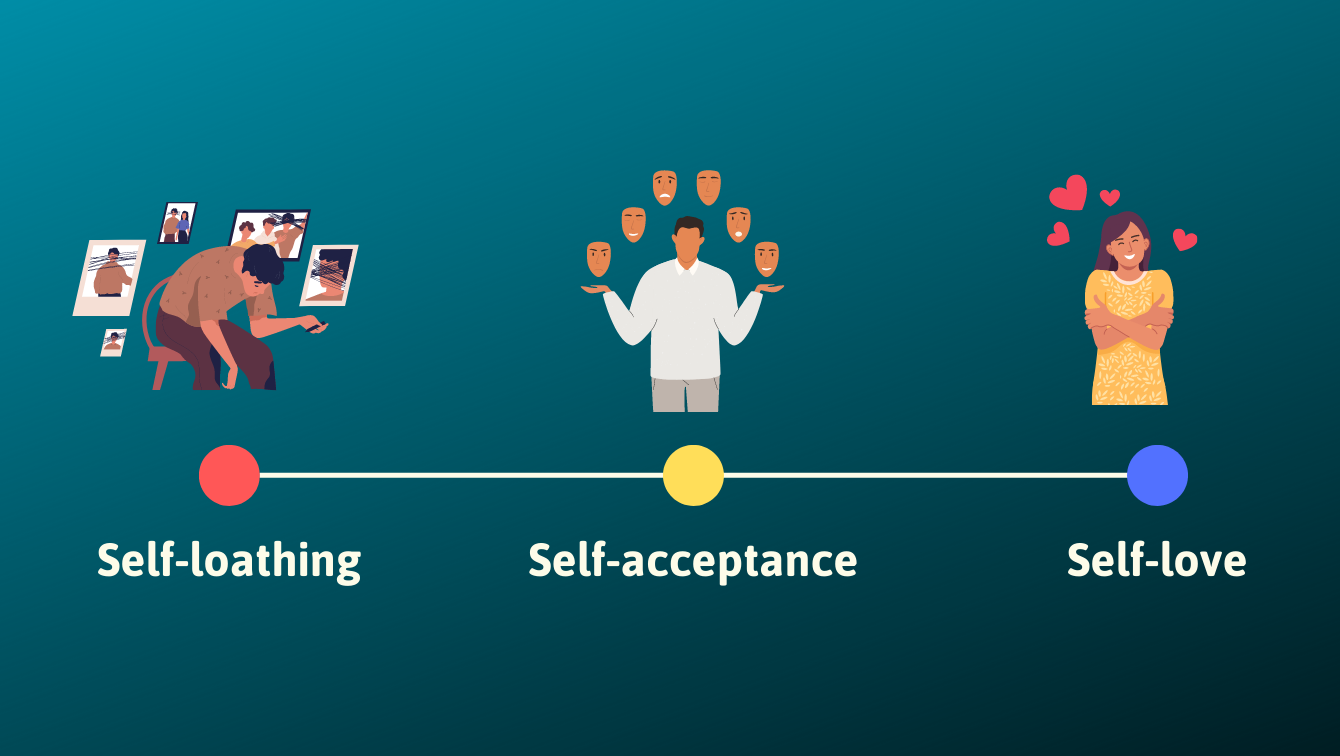
Self-esteem is separate from self-acceptance. Self-esteem describes the degree to which you like and feel good about yourself, and this can change from moment to moment.[5][6] When you do well, are praised, or succeed, your self-esteem goes up, and when you’re criticized or fail, it goes down.[3][4] Self-acceptance isn’t based on how you feel about yourself in a given moment or situation but instead is based on your ability to accept yourself fully in these moments.[5][6]
Even when you achieve self-acceptance, there will still be times when you’ll feel insecure, guilty, or bad about something you did or didn’t do. When this happens, knowing how to practice self-acceptance can make it a lot easier to let go, forgive yourself, and move on. Also, it becomes easier to practice self-compassion rather than spiraling into self-criticism and negative self-talk.[2][7]
What is radical self-acceptance?
Radical self-acceptance is another term for unconditional self-acceptance. Tara Brach, a noteworthy psychologist, researcher, and author who has written extensively on radical self-acceptance defines it as “an agreement with ourselves to appreciate, validate and support ourselves as we are.” However, she also emphasizes this agreement is flexible and able to change, including allowing people room to grow, evolve, and change.[2]
Radical self-acceptance comes from the Buddhist philosophy of radical acceptance, which involves accepting each moment exactly as it is. Mindfulness and being open-minded and curious instead of critical and judgmental are ways of practicing radical acceptance.
Studies show that radical acceptance improves your emotional and mental well-being and your overall quality of life.[3][5][6] Because of this, radical acceptance and radical self-acceptance are often used in therapy sessions to help people overcome social anxiety, depression, and low self-esteem.[2]
Conditional vs. unconditional self-acceptance
Most people can’t relate to radical self-acceptance and instead have unspoken agreements that make their self-worth, esteem, and acceptance conditional.[1][6]
For example, if you only feel good or OK about yourself “if” or “when” you do, achieve, or get credit for something, this is an example of conditional self-acceptance. Some of the common “conditions” people have for liking or feeling OK with who they are include:
- Productivity: How much they are able to get done and accomplish
- Achievement: How well they do or what they’re able to achieve
- Validation: What others say about them or what they’ve achieved
- Improvements: What flaws or shortcomings they’re able to fix or overcome
- Confidence: Their self-esteem or level of confidence in themselves/their abilities
- Relationships: Who or how many people like, respect, and accept them
- Possessions: What or how much they have in terms of wealth and material things
- Status: What role, job, or status they have, and how much power it affords them
- Appearance: What they look like, how attractive they are, or how much they weigh
- Morality: The “good” deeds they do, how much they adhere to their values/morals
- Intelligence: What or how much they know or how smart they are
- Desirability: How attractive they are to potential partners or the interest shown in them
Do you need to work on self-acceptance?
Self-acceptance isn’t a difficult concept to understand, but it is something that’s hard to practice. Very few people radically accept themselves, and those who do have usually devoted a lot of time and energy to self-love and acceptance activities. While most people struggle with self-acceptance, some struggle more than others. The following questions can help you determine your level of self-acceptance:
- Do you base your self-worth or self-esteem on what you do, how well you do it, what you look like, or what you’ve achieved?
- Does your view of yourself change based on other people’s opinions of you or things they say about you?
- Are you unable to face or accept certain parts of yourself or specific features and traits you dislike?
- Do you have a tendency to become very self-critical, unkind, or self-destructive when you make a mistake, fail, or have a flaw revealed?
- Do you only talk and treat yourself nicely when you feel like you “deserve” respect or when you’ve met the demands of your inner critic?
- Are there certain choices or mistakes you’ve made that you still ruminate or obsess over because you can’t forgive yourself for them?
- Do you try to hide your flaws, insecurities, or parts of yourself from others to fit in, be liked, or gain acceptance or respect?
- Are you unable to feel good or OK about yourself when you feel down, upset, insecure, or experience other difficult emotions?
- Do you need others to validate, reassure or praise you in order to feel good or OK about yourself or things you’ve done that you regret?
- Are you always trying to change parts of yourself or your life in order to become a version of yourself that you or others can accept, like, or respect?
If you answered “yes” to even one of the questions above, it probably means that you could benefit from working on self-acceptance. If you answered yes to multiple questions, it probably means that you have a lot of shame, self-doubt, or personal insecurities. These can all make it harder to believe in yourself, open up to others, and feel confident and good about yourself and your life.
Why is self-acceptance so difficult?
Unconditional self-acceptance does not come naturally to most people. Most people learn early on about the concepts of “good” and “bad.” This framework can become the basis for how people view the world, including how they categorize their experiences, behaviors, and personality traits. For example, kids might be praised for certain talents and traits but criticized for other behaviors or qualities that are seen as “bad.”
This mentality teaches people to constantly judge themselves and other people according to what they’re taught is good or bad. This kind of critical thinking can become a mental habit that is really hard to break.
One of the most common ways it shows up is in the tendency to be overly self-critical and focus too much on shortcomings, faults, or mistakes. This is usually a learned behavior that stems from people who were overly critical of you as a child (even if it came from a place of love).[1]
Why is self-acceptance important?
Improving self-acceptance might not pop up on the top of everyone’s to-do list, but it probably should. The proven physical and psychological benefits of self-acceptance, self-compassion, and self-kindness are undeniable. Decades of research have proven that people with higher rates of self-acceptance and self-compassion: [4][5][6][7]
- Suffer from lower rates of anxiety and depression
- Are overall less self-critical and have less negative self-talk
- Experience less stress and negative emotions
- Makes people more resilient to stress and life challenges
- Are able to cope more effectively with difficult thoughts and feelings
- Are happier and more satisfied in their lives
- Have healthier and closer relationships with people
- Are more emotionally intelligent and wise
- Have more motivation and higher rates of follow-through
- Are more resilient to failure and have higher rates of achievement
- Have healthier lifestyles and routines that support physical/mental wellbeing
- Are able to more easily forgive others (and themselves)
- Lead people to develop more fulfilling lives
- Are less likely to suffer from chronic illnesses or infections
- Are more likely to report a sense of peace and harmony in life
15 steps towards self-acceptance
Even when you know what self-acceptance is and why it matters, it can still be difficult to know exactly how to practice self-acceptance or where you should begin. In this section, you’ll learn about specific activities, practices, and exercises that can help you learn how to accept yourself more. These practices are designed to help change the way you think about yourself, talk to yourself, and treat yourself.
1. Look deep within and accept what you find
One important part of self-acceptance is the ability to look within yourself and be OK with whatever is there, bad or good. This means being honest about your faults and shortcomings without zooming in on them so much that you lose sight of your many strengths and talents.[1] It also means being able to acknowledge your thoughts and your feelings without judging or trying to fix, stop, or change the ones you don’t like.[2]
This process usually involves facing parts of yourself that you like and learning how to co-exist with your flaws and imperfections. While you might not like or feel good about all of these parts, they are still parts of you that you need to learn how to tolerate and accept.
2. Compare your self-talk to how you talk to others
Have you ever tuned into your thoughts during times when you’re feeling insecure, guilty, or bad about yourself? If so, you’ve probably noticed that your inner self-talk includes things you’d never dream of saying to anyone else, especially someone you care about. Awareness is usually the first step towards change, so it’s good to pay more attention to your thoughts.
One way to become more aware of your negative self-talk is to keep a thought log, where you write down some of your critical or negative thoughts.
While it isn’t possible to write down all of your thoughts, you can set an alarm to remind you to do it two or three times a day, or even just when you catch yourself in a negative spiral. After you get a few days’ worth of “data”, the following questions can help you identify, interrupt, and change self-critical thoughts:[7]
- Would I ever say things like this to people I love and care about?
- What would I say to someone I cared about if they were in my situation?
- Does this kind of self-talk motivate, support, or help me in any way?
- What are some of the main “triggers” for my negative self-talk?
- What should I say to myself instead next time I am triggered?
3. Separate your identity from your choices
Who you are is more than the sum of what you say and do, but a lot of self-critical people make the mistake of believing they’re the same. The problem with this mentality is that when you make poor choices, mess up, or do something you regret, you automatically become a “bad” person.
Separating who you are from what you do is such an important part of self-acceptance because it allows you to still see yourself as a “good person” when you make mistakes.[1][2][7]
The truth is that good people make bad choices all the time, including people in your life who you respect, admire, and love. In fact, you probably know about some of their mistakes and poor choices and still, accept and love them anyway. The key is to learn how to give yourself this same grace, especially after you make a mistake.[7] For example, saying, “That was a stupid thing to do” is better than saying “I’m so stupid for doing that.”
4. Be thoughtful about how you define yourself
We live in an era where people adopt labels in order to define who they are, what they’re worth, and where they belong. This isn’t always a bad thing and can even help you find like-minded people you can relate to.
Still, there are some labels or words you might use to define or describe yourself that aren’t helpful or healthy. For example, describing yourself as “an anxious person” or even as “shy” or “awkward” might be hindering your self-acceptance.
Make a list of all of the words, labels, and adjectives you use most often to define or describe yourself. Ask yourself the following questions:
- Is this word or label one that helps me accept or like myself more or less?
- Is this word or label helping to enhance my life, or does it hold me back?
- Does this word/label allow me to continue to grow, or does it limit my potential?
- Overall, does this word or label connect or disconnect me from other people?
- What would be different about me, my life, and my choices if this word/label disappeared?
5. Rethink your strengths and weaknesses
Our culture teaches us from a young age that we all have different strengths and weaknesses, but not many people think about how they may be connected. All of your strengths could be weaknesses in a certain situation or context and vice versa. Because most people feel like their weaknesses are what make them “unacceptable,” being able to view them differently can help with self-acceptance.[1][2][7]
For example, someone who lists a weakness of being “too brash” is probably very honest, and someone who is “lazy” may also be very laid back. In both examples, the only thing that is different is the specific word being used and whether it has a positive or negative association attached to it. One exercise that can help you rethink your strengths and weaknesses in a more helpful way is to:
- Write down a list of your strengths and weaknesses
- For each strength, write at least one way it could be a weakness
- For each weakness, write at least one way it could be a strength
- Draw lines to connect your related strengths and weaknesses
- Come up with just one list of “resources” that includes all of your strengths/weaknesses
6. Use your inner critic more wisely
It’s almost impossible to be highly self-critical and also accept yourself unconditionally at the same time.[1][2][7] This is why the journey to self-acceptance almost always requires some encounters with your inner critic. Like many, you might think your inner critic is the part of your mind that wants to tear you down by torturing you with blooper reels of all of your mistakes and faults.
In reality, the critic has a lot of other jobs (including many helpful ones) besides criticizing you, including helping you make decisions, make plans, and solve problems. You use this part of your mind every single day for good, but you might also let it turn on you and tear you down. Like your strengths and weaknesses, whether your critical mind is good or bad depends on how, when, and what you use it for.
Make a point to use your inner critic for good in ways that foster self-acceptance by:[1][3]
- Interrupting unhelpful self-criticisms and negative self-talk
- Shifting your critic’s attention to options or solutions vs. problems and barriers
- Making a list or plan to brainstorm ways to practice more self-acceptance
- Identifying ways to make things better after a mistake vs. blaming and shaming yourself
7. Adopt a mindfulness routine and stick to it
Mindfulness is the practice of being fully present and aware without being critical or judgemental of anything happening in the here-and-now. Basically, it’s a way of getting out of your head and into your life, where you can actually be present in your experiences rather than wrapped up in your thoughts.
Mindfulness teaches you how to stop constantly judging and evaluating yourself and your life, which is a key step towards increased self-acceptance and self-compassion.[3][7] There are a number of ways to easily incorporate mindfulness into your daily routine, including:
- Set aside 15-20 minutes a day for a guided meditation
- Set an alarm 2-3 times per day to remind yourself to take a moment to be fully present
- Practice “single-tasking” by focusing your full undivided attention on a task or activity
- Use grounding to regulate emotions by noticing things you can see, feel, or hear
- Sit still, breathe deeply, and focus on the sensations in your body for 10 minutes a day
8. Grow and learn from your mistakes
All humans are imperfect, but it can be difficult to remember that you’re not alone in your imperfection when you make a mistake.[2][7] For a lot of people, this is when it’s hardest (and most important) to practice self-acceptance. One of the best ways to break out of the self-critical spiral after you make a mistake is to change your view of mistakes.
Instead of seeing them as failures or terrible choices, try to see mistakes as opportunities to grow, learn, and do things better next time. If you really think about it, a lot of your most important lessons in the past may have come from mistakes, so it’s not delusional to think of them this way. When you learn to look at mistakes as lessons or chances to grow and do better, it becomes easier to accept them (and yourself) when you make them.[1][3]
9. Drop out of the perfection contest and be yourself
If you’re someone who hides their insecurities, mistakes, and flaws and tries really hard to be perfect, you aren’t on the path to self-acceptance. In fact, it’s more likely to lead you away from self-acceptance and towards self-criticism while also making it harder for others to relate to you. Plus, hiding your flaws and insecurities keeps others from getting to know the real you and can also make your insecurities bigger.
When you feel accepted for who you really are, it becomes a lot easier to accept yourself.
To begin the process, start with safe people who you know love you unconditionally, like your family or close friends. Next, work on filtering a little less at work or in other social settings when you’re around others.
Being more genuine and authentic can be hard, but it also is worth it. Research shows authenticity can improve your mental health and relationships while helping you reach your goal of self-acceptance.[9]
10. Face and feel your feelings
Research on self-acceptance has shown that learning how to face and cope with your feelings is an important step in the process.[1][2][4] This means being able to accept yourself and your experiences, even when they involve strong, difficult emotions like fear, guilt, sadness, or shame. While no one likes the way they feel, it is important not to suppress or avoid your emotions by distracting yourself or pushing your feelings down.
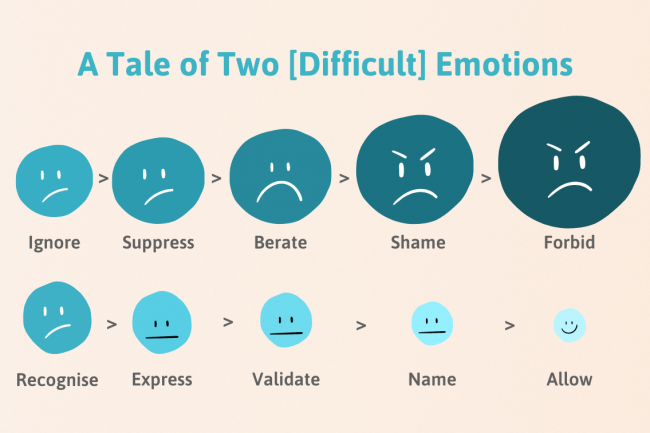
Instead of treating certain emotions like they’re dangerous landmines to avoid, learn how to experience and express your feelings in healthy ways. This is part of the process of radical acceptance.
The key to feeling your feelings without getting stuck or swallowed up by them is to actually feel them in your body, rather than getting stuck in your head.[2] To do this, focus your attention on sensations in your body when you have a strong emotion instead of repeating angry or negative thoughts that make it worse.
11. Let go of what you can’t control or change
There will always be things in life that are beyond your control or ability to change or fix, and focusing on these is one of the most common barriers to practicing acceptance. These include things like what others feel, think, or do, and also certain external circumstances that are happening in your life or in the world. Radical acceptance is a practice that you can apply to your life, as well as to yourself.[3]
To begin practicing radical acceptance, it’s important to identify the things you can and cannot control. This way, you can focus your time and effort on things within your control to change or improve rather than wasting it on the things you cannot. Below is a chart with some examples of things you can and can’t control:
| What you CAN’T control | What you CAN control |
| What other people say, think, feel or do, or how they choose to interact with you | Learning to set healthy boundaries, say no, and focus less on what others think of you |
| Mistakes you have made in the past that you regret, ruminate on or feel guilty or ashamed of | The choices you make now, the ways you try to remedy or repair mistakes or learn from them |
| Certain aspects of your appearance, including parts of your body you are insecure about | How you treat and care for your body by making healthy choices, refocusing on traits you like |
| Stressful situations that you’re not able to change or improve right now | How much time/attention you spend thinking about them, how you respond, and your self-care |
12. Detox from external validation
A lot of people who don’t know how to accept themselves look for validation from other people or the outside world, but this can actually make self-acceptance even harder. If you’re constantly seeking out praise, validation, or even likes and follows on social media, you may be dependent on external validation.
Since self-acceptance is all about internal validation, it’s important to be able to detach and, in some cases, detox from external validation. This way, you can actually have a chance to practice self-acceptance rather than relying on other people for acceptance. If you’re not sure where or how to begin this process, consider one or more of the following steps:[1]
- Take a social media vacation or break for a few days or even a few weeks
- Stop yourself from asking for advice, opinions, or validation from other people
- Don’t measure your self-worth by what you do, how much you do, or how well you do
- Stop comparing yourself to other people or their lives, successes, or circumstances
- Look inward instead of outward for validation when you’re feeling insecure
13. Practice self-compassion exercises
Most people have a very self-critical and unkind relationship with themselves, which is a major barrier to self-acceptance. Self-compassion is the act of being kind and compassionate to yourself, which is one of the best ways to put self-acceptance into action. Also, self-compassion is proven to improve your mental and physical health, relationships, and your overall quality of life.[7]
There are many different ways to practice self-compassion, including some of these exercises:[7]
- When you’re feeling bad or insecure, try writing a self-compassion letter, which involves writing to yourself as if you’re writing to a friend in the same situation, then reading the letter aloud to yourself
- Try listening to a loving-kindness guided meditation or one that’s based on self-compassion and self-kindness
14. Forgive and let go of the past
Radical acceptance is all about the here-and-now, so being stuck in the past can keep you from being able to practice acceptance.[1][3] If you’re bothered by certain things that have happened to you or even things you’ve done that you regret, it’s often a cue that you haven’t fully forgiven and let go.
Whether it’s yourself or someone else that you haven’t forgiven, holding on to grudges and resentment isn’t good for you. It can add stress to your life, impact your mental health, and also hinder your progress towards self-acceptance. If you’re not sure how or where to begin the process of letting go of past mistakes and grudges—try one of these exercises:
- Consider the opposite side by taking the perspective that you or the person you can’t forgive was doing the best they could at the time, and try finding proof that this is true
- Zoom out to put what happened into a bigger picture by asking yourself if this really would matter 1 year, 5 years, or 10 years from now
- If you’re stuck on a mistake you made, try writing yourself a sincere apology letter and then responding with a sincere forgiveness letter
15. Find the still, calm, quiet place within
Within each of us, there’s a place that’s always calm, still, and quiet. This is a place where there aren’t expectations, to-do lists, or competitions. It’s a place where you can fully relax and be yourself. In this space, self-acceptance isn’t something you need to try hard to practice or think about because it just comes naturally.
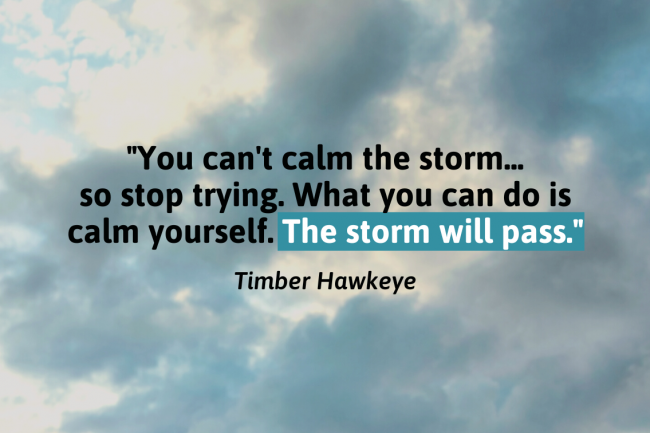
This place can feel difficult to reach during times when we’re busy or stressed out by other people, the world, or the noise of our own thoughts. When you learn how to find this place of refuge within yourself, it’s possible to access it almost any time you need to, including times when you’re struggling to accept yourself or your circumstances. Try one of these exercises to find your inner place of refuge:
- Tune into your center (the core of your body) and notice any physical sensations there (e.g., a knot in your stomach or a wave of energy)
- Take a few deep breaths and imagine that each breath in opens up space and makes more room for this feeling, and each exhalation releases some of the tension
- After opening up and making space for these feelings, track them as they inevitably come, swell up, and subside (like a wave)
- Notice how when they subside, these feelings and sensations stop and deliver you to a deeper, stiller, and calmer place within yourself
20 self-acceptance quotes
Because self-acceptance is such a hard but important practice, there’s no shortage of amazing quotes and wise words on this topic. Below are 20 of our top picks for self-acceptance quotes and affirmations that can inspire your journey.
1. “We don’t have to wait until we are on our deathbed to realize what a waste of our precious lives it is to carry the belief that something is wrong with us.” – Tara Brach
 
2. “You did then what you know how to do, and when you knew better, you did better.” – Maya Angelou
 
3. “When we criticize ourselves, we are both the attacked and the attacker.” – Kristen Neff
4. “If you have forgiven yourself for being imperfect and falling, you can now do it for just about everybody else. If you have not done it for yourself, I am afraid you will likely pass on your sadness, absurdity, judgment, and futility to others.” – Richard Rohr
 
5. “Remember who you were before they told you who to be.” – Dulce Ruby
 
6. “True belonging doesn’t require you to change who you are; it requires you to be who you are.” – Brene Brown
7. “Maturity includes the recognition that no one is going to see anything in us that we don’t see in ourselves.” – Marianne Williamson
 
8. “Most things will be okay eventually, but not everything will be. Sometimes you’ll put up a good fight and lose. Sometimes you’ll hold on really hard and realize there is no choice but to let go. Acceptance is a small, quiet room.” – Cheryl Strayed
 
9. “Grant me the serenity to accept the things I cannot change, the courage to change the things I can, and the wisdom to know the difference.” – Alcoholics Anonymous
10. “To be nobody but yourself in a world that’s doing its best to make you somebody else is to fight the hardest battle you are ever going to fight. Never stop fighting.” – E. E. Cummings
 
11. “No amount of self-improvements can make up for any lack of self-acceptance.” – Robert Holden
 
12. “I follow four dictates: face it, accept it, deal with it, then let it go.” – Sheng-yen
13. “Wanting to be someone else is a waste of who you are.” – Kurt Cobain
 
14. “The worst loneliness is to not be comfortable with yourself.” – Mark Twain
 
15. “Your task is not to seek for love, but merely to seek and find all the barriers within yourself that you have built against it.” – Rumi
16. “Once we accept our limits, we go beyond them.” – Albert Einstein
 
17. “The mental suffering you create is always some form of non-acceptance, some form of unconscious resistance to what is. On the level of thought, the resistance is some form of judgment. The intensity of the suffering depends on the degree of resistance to the present moment.” – Eckhart Tolle
 
18. “Create the kind of self that you will be happy to live with all your life.” – Golda Meir
19. “A weed is but an unloved flower.” – Ella Wheeler Wilcox
 
20. “The minute you settle for less than you deserve, you get even less than you settled for.” – Maureen Dowd
Final thoughts
Self-acceptance is the simple but challenging task of finding peace with all aspects of yourself, exactly as you are now. This means accepting yourself without any edits, omissions, or upgrades and no conditions or exceptions.
You only achieve this kind of radical self-acceptance when you’re willing to invest your time into self-acceptance exercises. Better physical and mental health, closer relationships, more confidence, and a fuller, happier life are among the many ways that self-acceptance activities pay you back.[1][2][4][5][7]
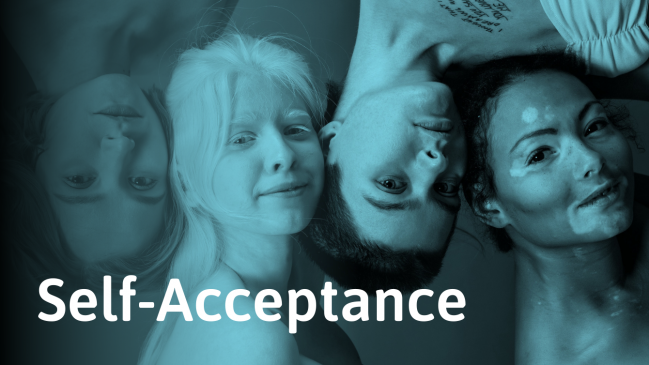



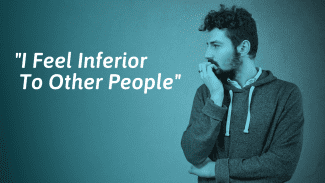
Thanks for this, this article really speaks to me. I hope I can learn to accept myself soon. I’ve been struggling with self-acceptance for years and this article really gave me hope that I can find it someday.
Great discourse and thoughts on the value of Self Acceptance… Thank you God bless